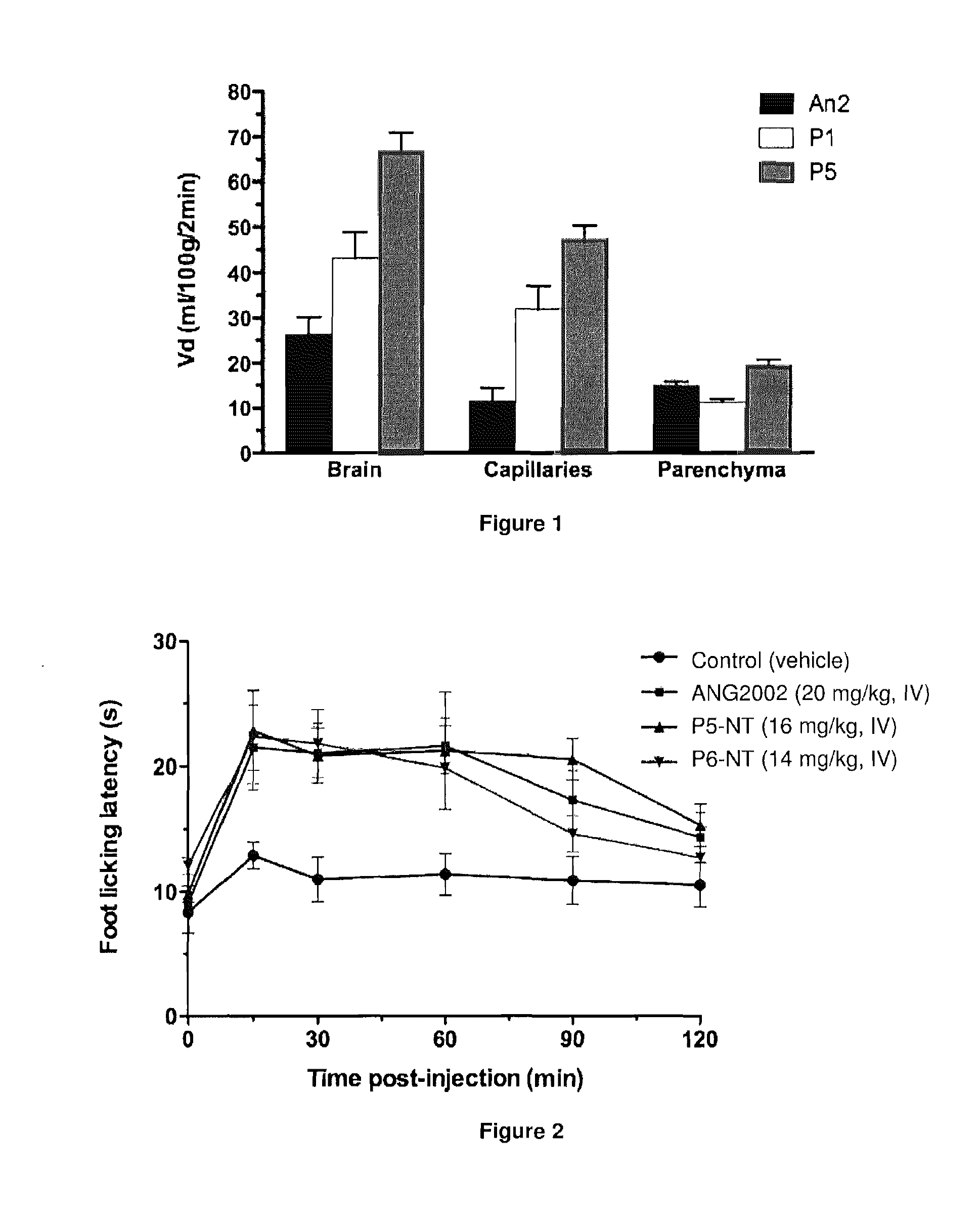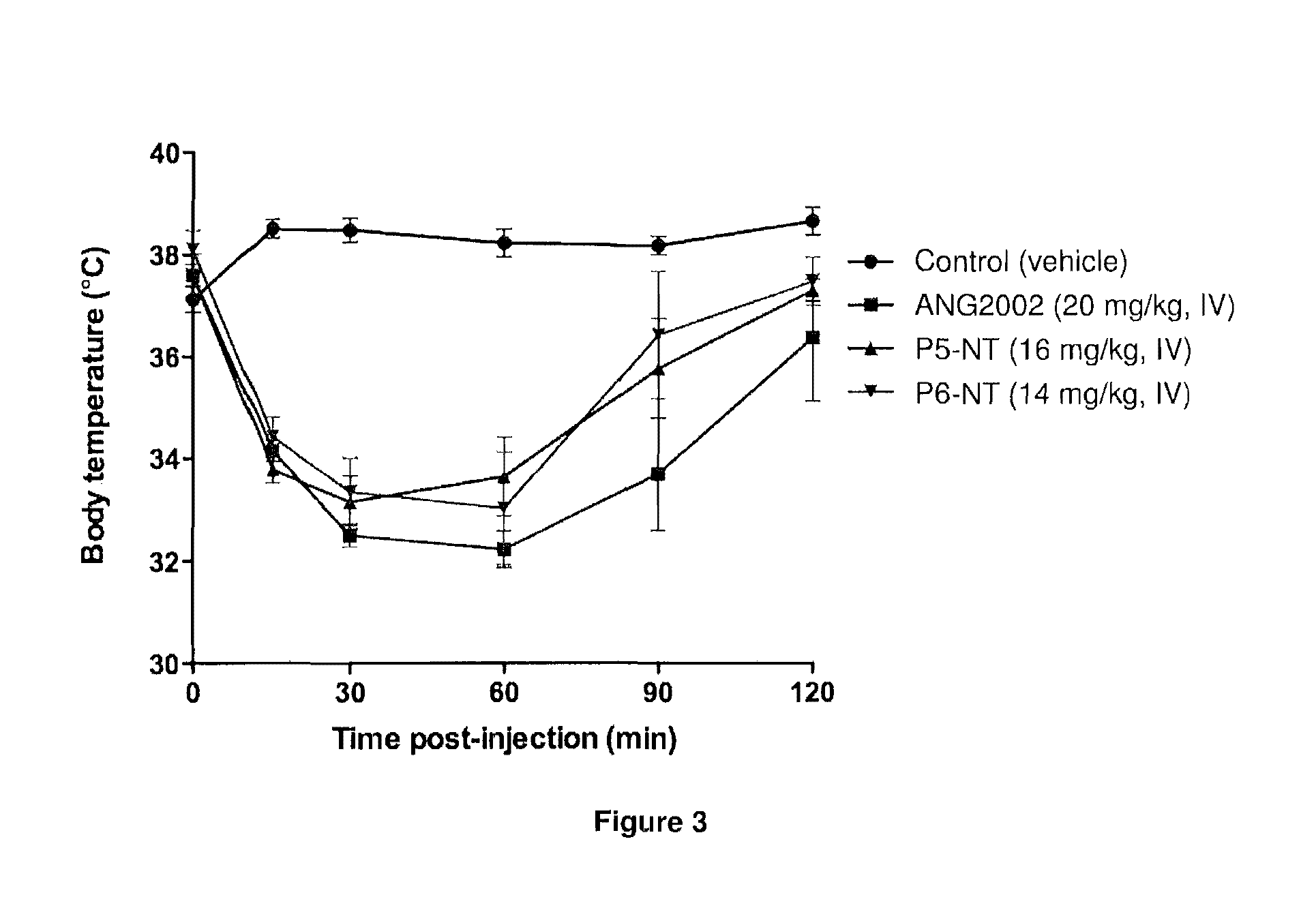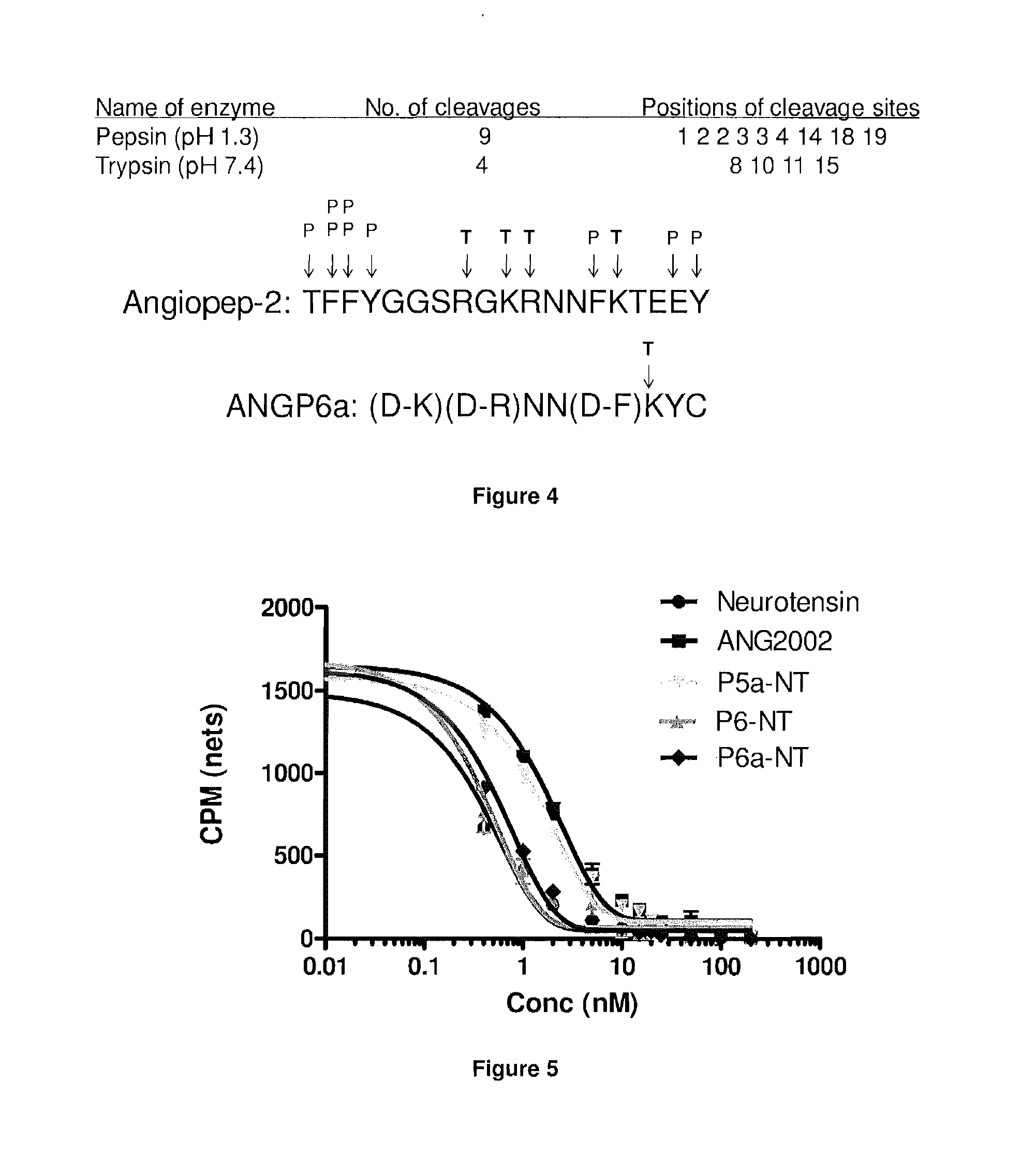Short and d-amino acid-containing polypeptides for therapeutic conjugates and uses thereof
a technology of damino acid and polypeptide, which is applied in the field of short polypeptides, can solve the problems of often impaired treatment of brain diseases, and achieve the effect of improving efficiency and efficiency of transport across the bbb
- Summary
- Abstract
- Description
- Claims
- Application Information
AI Technical Summary
Benefits of technology
Problems solved by technology
Method used
Image
Examples
example 1
Synthesis of Shorter Analogs of Angiopep-2-Cys (P1 to P6)
[0364]SPPS (Solid phase peptide synthesis) was carried out on a Protein Technologies, Inc. Symphony® peptide synthesizer using Fmoc (9-fluorenylmethyloxycarbonyl) amino-terminus protection. Shorter Angiopeps were synthesized on a 100 μmol scale using a 5-fold excess of Fmoc-amino acids (200 mM) relative to the resin. The crude peptide was precipitated using ice-cold ether, and purified by RP-HPLC chromatography (Waters Delta Prep 4000). Acetonitrile was evaporated from the collected fractions and lyophilized to give a pure white solid (purity >95%). The mass was confirmed by ESI-TOF MS (Bruker Daltonics). Table 4 provides the sequences of the Angiopep-2-Cys (AN2-Cys) and various shorter analogs (P1 to P6).
TABLE 4Shorter analogs of Angiopep-2-Cys (P1 to P6)NAv.Peptide(AA)CHydrophilicityMwSequenceAN2Cys-NH220+30.22403.6TFFYGGSRG KRNNFK TEEYC-NH2P118+30.42155.4 FYGGSRG KRNNFK TEEYC-NH2P216+30.81845.0 GGSRG KRNNFK TEEYC-NH2P31...
example 2
Transport of Shorter Analogs P1 and P5
[0365]To confirm that the shorter analogs P1 and P5 cross the BBB, in situ brain perfusion was performed using methods standard in the art. The initial transport was measured as a function of time. Results indicate that the brain uptake for P1 and P5 is similar to or higher than for the Angiopep-2 (An2) (FIG. 1). Capillary depletion was also done to quantify the amount of the analog found in the brain parenchyma (FIG. 1). Similar or higher levels of P5 were found in the brain parenchyma when compared to An2 and P1. In addition, these results indicate that the analogs are not trapped in the brain capillaries. Overall, our results demonstrate that the new shorter analogs P1 and P5 effectively cross the BBB.
example 3
Characterization of Neurotensin Derivatives of P5 and P6
[0366]We performed experiments to test whether the shorter analogs were able to induce analgesia or sustained hypothermia in mice, as compared to ANG2002 (modified neurotensin (NT) conjugated to Angiopep-2 via an EMCS linker) having the structure:
[0367]The tested conjugates included P5-NT having the sequence KRNNFKTEEYC-pELYENKPRRPYIL and P6-NT having the sequence KRNNFKYC-pELYENKPRRPYIL, where P5 and P6 are both conjugated on the lysine of NT via an EMCS linker and pE denotes pyro-L-glutamic acid.
[0368]To determine induction of analgesia, we tested the latency between hot plate foot exposure and foot licking behavior in control mice and in mice receiving ANG2002, P5-NT and P6-NT at an equivalent dose of neurotensin. Thus, mice received either an intravenous 20 mg / kg bolus injection of ANG2002, an intravenous 16 mg / kg bolus injection of P5-NT, or an intravenous 14 mg / kg bolus injection of P6-NT. All of the tested conjugates inc...
PUM
| Property | Measurement | Unit |
|---|---|---|
| length | aaaaa | aaaaa |
| surface area | aaaaa | aaaaa |
| lipophilic | aaaaa | aaaaa |
Abstract
Description
Claims
Application Information
 Login to View More
Login to View More - R&D
- Intellectual Property
- Life Sciences
- Materials
- Tech Scout
- Unparalleled Data Quality
- Higher Quality Content
- 60% Fewer Hallucinations
Browse by: Latest US Patents, China's latest patents, Technical Efficacy Thesaurus, Application Domain, Technology Topic, Popular Technical Reports.
© 2025 PatSnap. All rights reserved.Legal|Privacy policy|Modern Slavery Act Transparency Statement|Sitemap|About US| Contact US: help@patsnap.com



